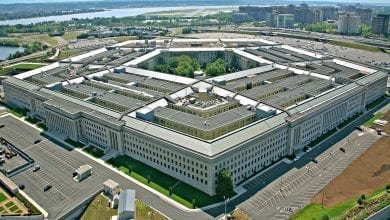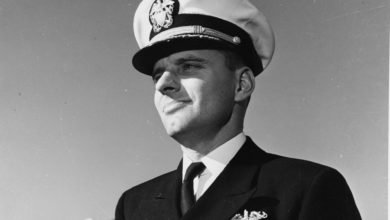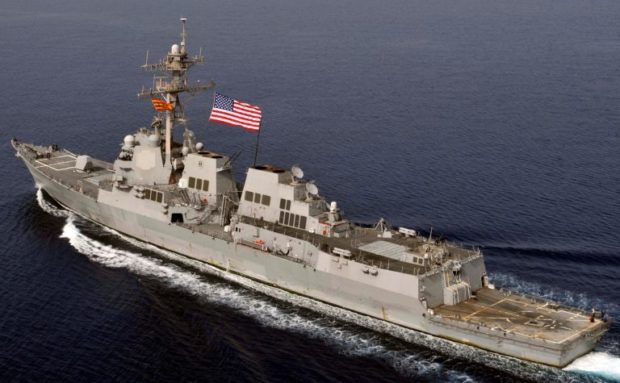Medal of Honor Monday: Army Staff Sgt. Allan Ohata
During World War II, Japanese-American service members weren’t welcomed with open arms on their home turf thanks to the stigma that came with the Pearl Harbor attacks in Hawaii. But Army Staff Sgt. Allan Ohata was one of many Japanese-Americans — known as Nisei — to push ahead anyway to fight with bravery and distinction.
More than 55 years after he took out dozens of enemy soldiers in Italy, he was finally awarded the Medal of Honor.
Ohata was born Sept 13, 1918, in Honolulu to parents who emigrated from Japan. The family owned a small flower garden business where Ohata and his seven siblings occasionally helped. After high school, he worked with his brother, Donald, in a surplus parts store.
Ohata joined the Army in November 1941 — a month before the attacks on his home island of Oahu that thrust the U.S. into World War II.
At the beginning of the war, Nisei weren’t initially allowed to serve in the armed forces due to fears stemming from the attacks perpetrated by Japan. Deep suspicion of Japanese-Americans settled across the nation, leading to the relocation of hundreds of thousands of people to internment camps simply out of distrust.
Yet many Japanese-Americans still wanted to serve. Eventually, they were allowed to enlist into segregated units. Ohata was swallowed into that fold. In June 1943, he volunteered with more than 1,200 other Nisei soldiers to sail from Honolulu to Europe to fight as the 100th Infantry Battalion. They were the first all-Nisei Army unit activated.
By the end of September 1943, after a few months of sailing, Ohata’s unit landed on Italian soil. It was slightly more than a month later that he would be put to the biggest test of his life.
On Nov. 29, 1943, then-Sgt. Ohata was near Cerasuolo, Italy, with Company B of the 100th Infantry Battalion (Separate). Ohata, his squad leader and three other men were ordered to protect their platoon’s left flank against about 40 heavily armed enemy soldiers.
Ohata posted one of the men on the far left, 15 yards from his own position. A few minutes into the fight, he heard that man shouting for help. Apparently, his automatic rifle had been shot and damaged.
Without hesitation, Ohata jumped up and ran 15 yards through heavy machine gun fire to help the soldier. As soon as he got there, Ohata opened fire on the enemy, killing 10 men while his fellow soldier withdrew to get his damaged weapon replaced.
When the soldier returned, he and Ohata took out 37 enemy soldiers while holding their position. Both men then charged the three remaining soldiers and took them prisoner.
According to Ohata’s citation, he and his fellow soldier also managed to stop 14 more enemy soldiers, killing four and wounding three more while the rest fled. The pair held their flank through the next day, staving off all other attacks.
A Quiet Life
Ohata eventually came home from the war and received the Distinguished Service Cross for his bravery. It was just one of many honors the 100th Infantry Battalion earned, making it one of the most decorated units of the war.
Ohata left the Army, went back to school and got a degree in engineering. He worked for Northrop Aircraft and Lockheed Missile and Space Company in California.
Ohata died of colon cancer on Oct. 17, 1977, when he was just 59. He is buried in the National Memorial Cemetery of the Pacific in Hawaii.
Ohata’s sister, Mildred, said he was always a quiet child, and that didn’t change when he got older. He rarely talked about the war. According to a 1985 Hawaiian Herald article, most of the friends he made later in life didn’t even know he’d been in the war until after he died. His sister said he suffered his cancer diagnosis alone nearly until the end because he didn’t want to burden others.
Belated Honor
While the marvelous bravery of the men of the 100th was well-known during World War II, only one Medal of Honor was initially given to a Nisei soldier: Private 1st Class Sadao Munemori received it as an upgrade from a Distinguished Service Cross in April 1946, a year after he died in battle.
That would change 50 years later.
In the 1990s, legislation sponsored by a Hawaiian Senator led to an official review of many of the Distinguished Service Crosses that had been awarded to Japanese-Americans for their heroics and loyalty — despite the discrimination they faced at the time. After years of research, the review resulted in the military upgrading 19 of the 52 Distinguished Service Crosses and one Silver Star to Medals of Honor.
Ohata, six other members of the 100th and several more Nisei soldiers received that honor on June 21, 2000. During a White House ceremony, President Bill Clinton presented the medals to those who were still alive and their family members. Ohata’s brother, Donald, accepted the medal on his behalf.
We continue to thank Ohata and all the Nisei soldiers, airmen, sailors and Marines who put their lives on the line for their nation during World War II.
This article is part of a weekly series called “Medal of Honor Monday,” in which we highlight one of the more than 3,500 Medal of Honor recipients who have earned the U.S. military’s highest medal for valor.
Source: Department of Defense
Content created by Conservative Daily News is available for re-publication without charge under the Creative Commons license. Visit our syndication page for details.



